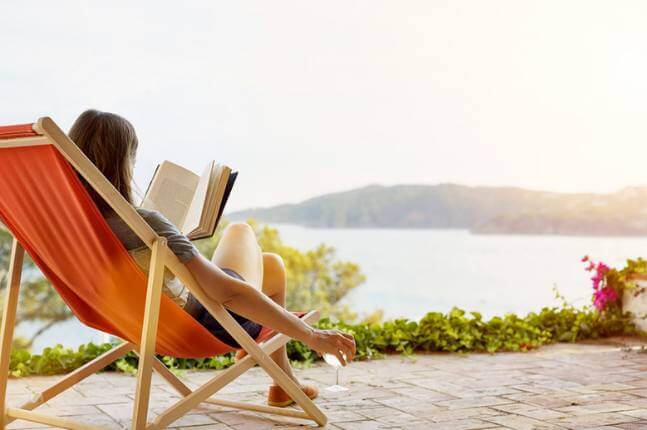Author: Randeep Singh / go to all articles on Yoga Concepts

I would be discussing some very innovative, and easy to use techniques, as they belong to our day to day living,in order to help learn how to relax.
How to Relax with Music? Mellow Tunes. Its hard to deny that music can inspire, inflame, agitate every nerve in one’s body.
But music can also produce the most profound states of mental and physical relaxation as well.
In fact, the right music in the hands of a trained therapist can yield reductions in blood pressure,
heart rate, and even the levels of stress hormones, such as cortisol, that the body produces. The power of music as an aid to quality sleep already stands proved.
While one may not have access to the same tools and techniques used by the pros, a good music player and a few tips on choosing the right music can go a long way toward making one’s listening experience a mellower one and help one learn how to relax.
How to Relax? Choose music with no lyrics
Lyrics encourage your brain to sort out the words, to make sense of them, Its a cognitive process that could interfere with one’s attempt to relax. Just the tunes which resonate with your energies is the best answer to the seemingly difficult question; how to relax?
Choose Music that is Familiar
Its a lot like hiking. Which would one be more at ease with: a trail one had hiked a half dozen times; or the one one had never set eyes or foot on. A piece of music that one has never heard before is a new terrain that one’s mind will be busy analyzing. Thus, if one is advising some one on how to relax then suggest listening to music one already loves to hear.
Choose Music with no Emotional Baggage
In much the same way that a smell can suddenly take one back to one’s childhood, the connection between music and memory is very powerful. One would want to be careful that the music one chooses for peace and relaxation is not connected to a turbulent, unhappy or emotionally charged phase of one’s life.
Choose Music which lacks Harmonic tension
This is a very significant but often not utilized tip on how to relax the right way. If one chooses toe drive a musician crazy, one must sing an eight note scale … dah-dah-dah-dah-dah-dah-daaaaah… and leave out the last note. Annoying isn’t it? The mind screams to have the last note sung and the progression “resolved”.
Some music , such as Samuel Barber’s ‘Adagio for Strings’, can go many measures before it resolves. This creates a tension that may be aesthetically but is less than relaxing, because the mind is constantly anticipating the final chord. On the other hand, a great deal of baroque music resolves frequently, with many short phrases that end in satisfying harmony, although it is not the only type of music that can facilitate relaxation.
The fast pace of modern life often leaves little time for meditation beside a forest stream, but the audio tapes that bring one the sounds of falling raindrops, bubbling brooks, rustling leaves and even dancing daffodils are now available everywhere. They nicely bring a few of nature’s benefits within the convenient confines of one’s own home.
How to relax with Nature’s Soothing Embrace?
How often does one really experience nature? With four walls around oneself, and an air conditioning unit between one’s cabin and the fresh air, the answer is probably not much. But humans are born of the natural world, and whenever one gets back to nature, its a soothing experience much like the relaxed sleep a baby falls into when held close by its mother.
Perhaps because of this, nature can enhance the act of relaxation, providing especially meaningful focal points for both deep, purposeful meditation, tuning the mind to remain relaxed naturally, and spontaneous stress- chasing mini breaks as stress can kill if left on its own.
How to relax with Elemental Meditation?
Vistas
A good view of far reaching vistas can be relaxing because the wide open space counteracts tense feelings of being closed in. One must get away to one’s favorite scenic spot wherever one can, preferable on one’s own self. Gaze out over the expansive landscape and escape for a few minutes and then try to capture it internally, Close your eyes and picture it; notice how you feel.
Ocean
The fact that the surf does have a very rhythmical and repetitive action also means that it is a great focal point to use for relaxation exercises. One must try to match one’s breathing to the waves. Breathe in as the wave comes up to shore. breathe out as the water recedes. If the waves are running too fast, stagger your breath to match every second or third wave. Regular practice can help one understand the concept of how to relax with ocean waves.
Sun
Traditionally, the Sun is the symbol of life and energy. But with all the time we spend indoors, we tend to loose contact with it. Basking in the gentle warmth of the early morning Sun not only revitalizes, but also provide our bodies with the wherewithal for producing vitamin D. As an additional benefit Ultraviolet rays from the sun can heal many ailments.
Sky
The sky is totally boundless. Many of our worries and self-important activities are placed in perspective against the limitless sky. One of the best times to look at the sky is the hour before the sunrise and the hour after sunset. Concentrating on the slow, subtle color changes that occur as the light begins to grow or fade is not only relaxing, but beautiful as well.
How to Relax with Smell?

Forget about the roses. It may be that the aroma of green apples is Mother Nature’s most powerful tranquilizer.
We have been looking at a form of long term anxiety, called generalized anxiety disorder, hoping to find an odor that might reduce the level of stress. So far green-apple smell seems to be the most effective. – Alan R. Hirsch. M.D., neurological director of smell and taste treatment and research foundation in Chicago.
According to Dr. Hirsch, a scent can have a tranquilizing effect on brain. Yoga treats mind and the brain separately. he explains that the scent of lavender, for example, seems to increase alfa -wave function in the brain. This is the same kind of brain activity which is associated with states of relaxation. Adding these smells in one’s environment is an effective technique, response to the question, how to relax with smell?
On another level, a smell can relax one by bringing back the good old days. Its called the olfactory evoked nostalgia, where a scent reduces anxiety by bringing back happy memories from a less complicated time in one’s life. Scents that evoke this response vary from person to person depending on personal experiences.
How to Relax with a Partner?
Nestling in the arms of someone one loves not only warms the heart, it soothes the soul. Physical contact opens up a whole level of ‘mother is home’ feelings that hearken back to memories of the initial intimacy, safety and caring we experienced in infancy.
And developing the right kind of touching can actually allow one to produce this ‘safe harbor’ response with greater efficiency. here are a few steps on how to relax effectively with a partner.
Connect with one’s eyes
Eighty per cent of the information we take in about one another comes through the eyes. If one wants to take touching to the limit, eye contact touches the soul.
Make touching the main event
Both men and women complain that they are only being touched when it’s a signal for sex, so touch gets associated with performance anxiety. Take the anxiety out of it by having sessions that are strictly touching for touch’s sake.
Get in Sync – How to relax with partner
Try spooning with the one you love by lying on the couch and wrapping your arms around him or her from behind. One will find, that after a while, with one’s chest pressed against his or her back, the two will start breathing in sync. While it does happen naturally, actually focusing on synchronized breathing is not only very meditation technique for how tp relax with a partner, but it strengthens the bonding process as well.
How to relax? Don’t just hug
Try different rituals that involve touch, For example, washing each other’s hair is wonderfully relaxing – one is touching and both are doing something for each other, plus the scalp is a very sensitive area.
How to prepare a Room to Relax?
While one might be able to practise one’s relaxation rituals just about anywhere, few will argue that a quiet retreat of one’s own works better than a kitchen breakfast nook amidst the sounds of slamming dekchis. When it comes to turning an average room into a relaxation retreat, the biggest rule is to decorate in the way that pleases one the most. But there are a few other things as well.
Color
Earth tones, such as neutrals, off-white, beige, cool greens and blues are the most soothing colors. The smaller the room, the lighter the wall shade should be to make the space seem more open and spacious.
Lighting
Choose incandescent or halogen lights over fluorescent ones, These tend to approximate natural light better. And, if possible, have a dimmer switch installed so that one can make subtle adjustments in the lighting level.
Accoustics
Choose a room that is not only farthest away from the traffic flow in the house but also isn’t directly underneath the pitter-patter of big or little feet as well. Use soft surfaces like carpets and wall tapestries to absorb sound and dull the noise-reflecting qualities of walls and hard floors.
Furniture Placement
Arrange the furniture around a relaxing focal point, such as a window framed view or a scenic wall hanging.
Temperature
Make sure the room isn’t too hot in the summer or too cold in the winter and has good ventilation. One might also want to consider installing a ceiling fan, rather than an air conditioner. Its the closest thing indoors to a soothing summer breeze.
Plants
A bit of green in the room adds a relaxing dose of nature to one’s retreat. And some house plants are also particularly adept at cleaning and refreshing the air. All these are innovative techniques related to one’s day to day living which teach one on how to relax better.
Read other Informative Articles….
Understanding and Heal Chronic back Pain

